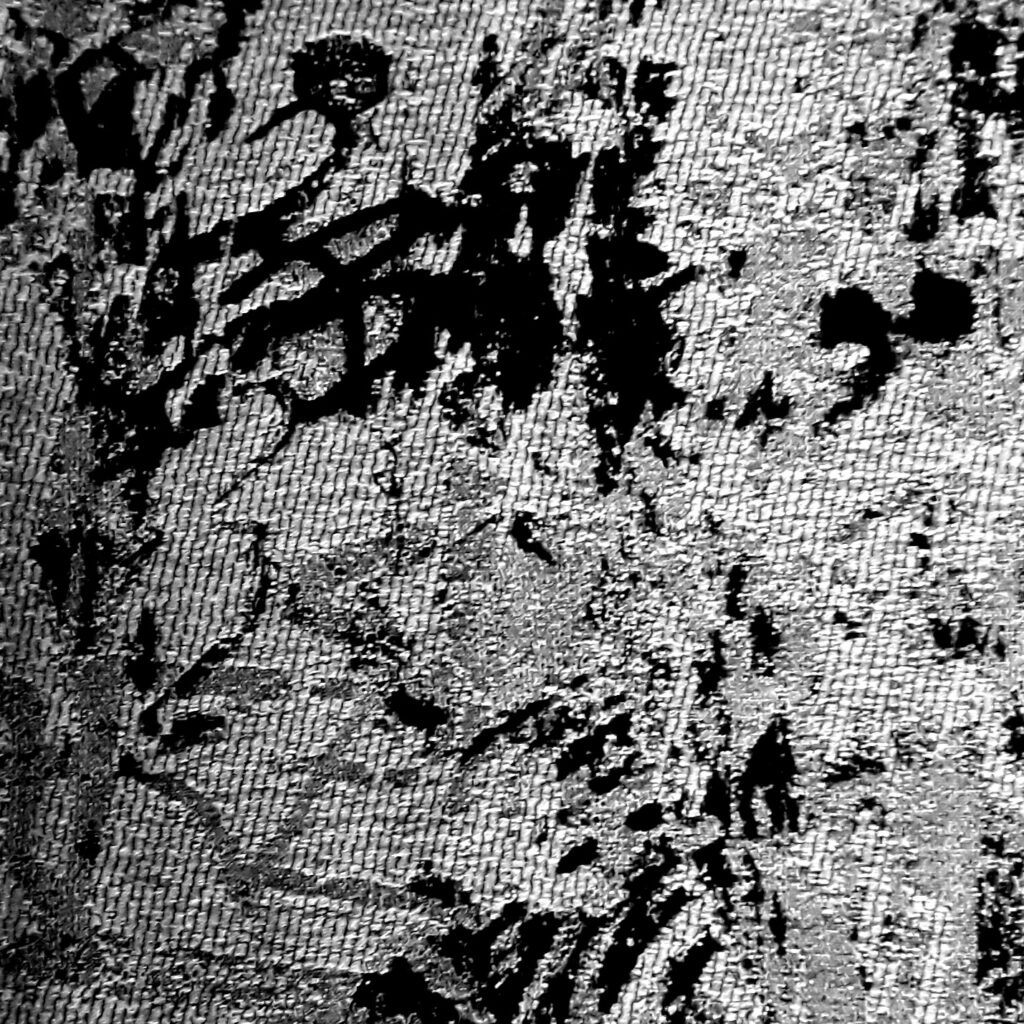#street_bubbling 2024
Hi, it’s a pleasure to see you here! You have probably found a soft sculpture of a #street_bubbling project somewhere in the world. This project started in May 2024 in Porto, Portugal. This city full of art inspired me to leave my contribution to this urban space – some bubbled textiles, textile graffitys. This work is about 99% natural and decomposes over time. But one bubble is synthetic. A drop of tar in a honeypot… you know. I’d like to see if nature takes this artwork and grows it, creating wonderful effects on the work over time or does human intervene? And what will become of the black bubble?
Every day, this artwork has a new look. I would be very happy, if you could send me a photo of how it looks today @marinnooni
#street_bubbling #textile_graffity #textileartinstreet #textilesculpture #softsculpture #artandnaturecollaboration #teamworkwithnature #ajasmuutuvkunst #tekstiilimull #eluomasmullis
Minitextiles 10×12 cm, cotton, polyester.
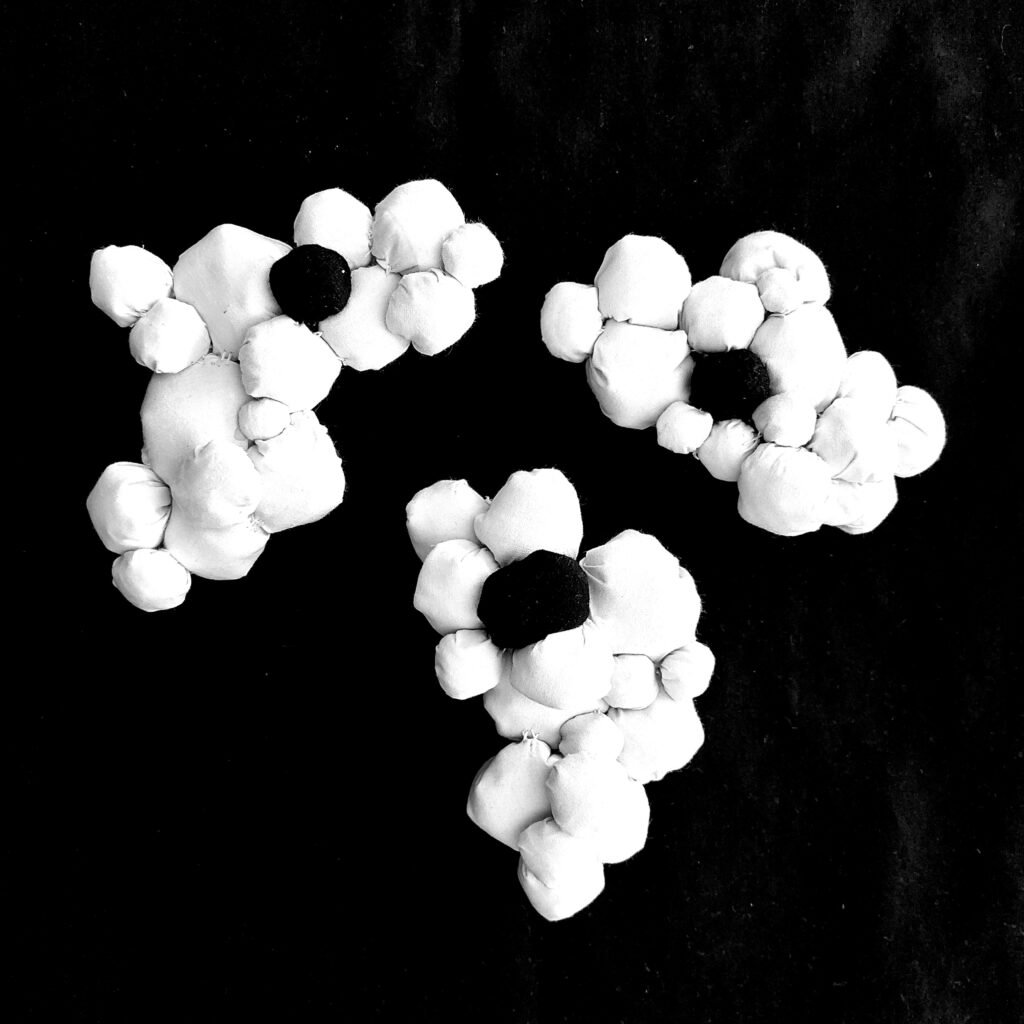
“New layering” / “Uus kihistus” 2023/2024
The source material for the work is my Bachelor’s thesis from the Estonian Academy of Arts (“Forbidden Love. Textile Therapy through the Growing Artwork”, tutors Krista Leesi, Piret Valk), which was supposed to end its life cycle in a compost in the spring of 2023. However, I ended up in the hospital and the work was left outside to mature for some time. As is known, some things only get better as they mature.
This was the starting point for a new artwork called “New Layering”, with co-authors being time, weather, and the birds, mice, and other animals of a small district in Tallinn, who continue to shape the artwork according to their will and add new layers with their touch. Since the textilework is natural and contains seeds, there is plenty of interest. Thus, the work continues to evolve and each day reveals a new perspective. At the same time, I am aware that all of is temporary. My goal is to observe the life cycle of the textile. Circulation is a very important part of a responsible textile culture and this issue to touches me deeply. The current situation of this work is symbolically reflects the current state of the textile world – it looks a bit sad.
Frames 50×100 cm (3x), natural materials (cotton, linen), seeds.
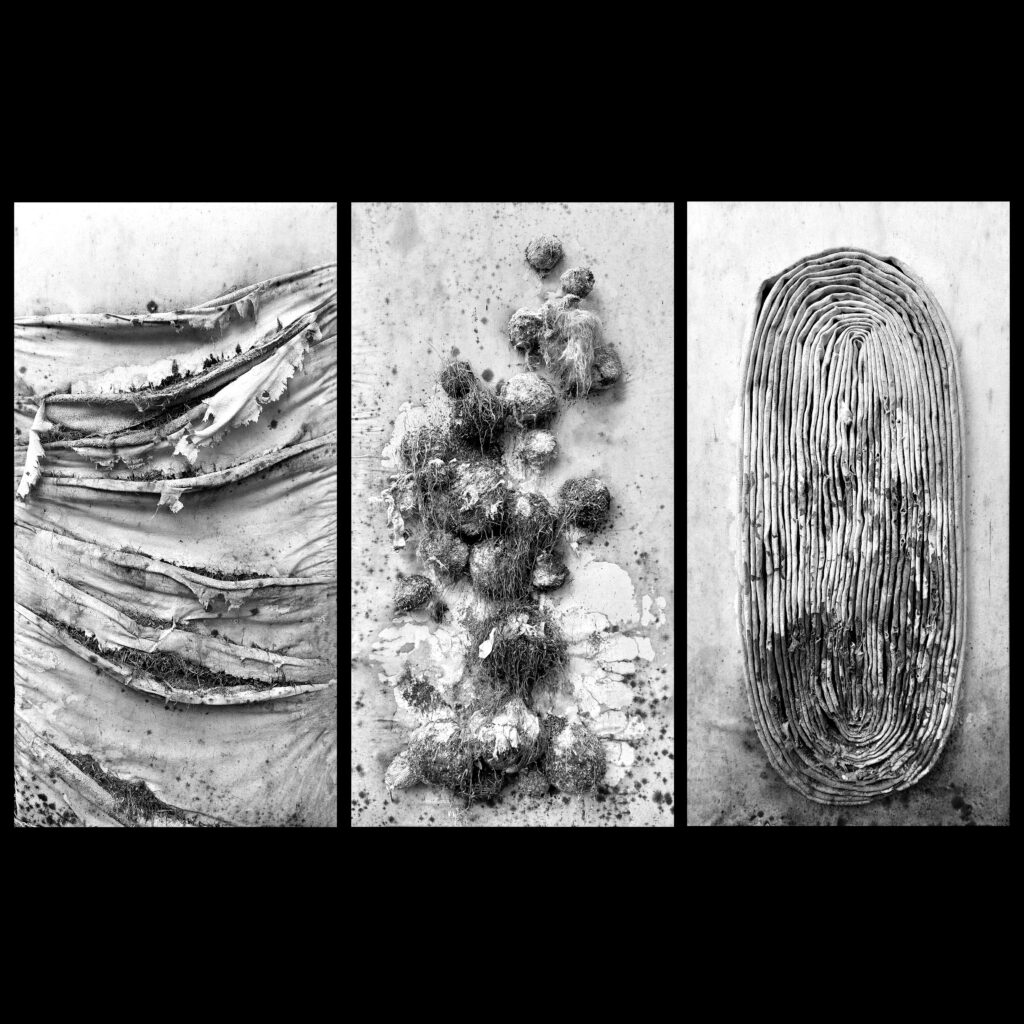
“Forbidden Love. Textile Therapy through the Growing Artwork” / “Keelatud armastus. Tekstiiliteraapia läbi kasvava kunstiteose loomise” 2023
The aim of this work is to look for an answer to the question, how should people live, who can not own indoor plants and interior textiles due to allergic asthma? As one possible solution, I propose to combine these two fields instead, and make a temporarily growing textile artwork. It’s a so-called “textile houseplant” that needs care and love to be able to offer the same to its owner. This living textile offers a temporary replacement for both indoor plants and textiles. It does not contain soil, where unpleasant mold and bacteria can develop, because the seeds have a lot of power, needing only water to grow. After use, the artwork goes to the bio-waste bin, because it’s all natural. Using the example of plant growth, we can also talk about the need for circulation in the textile field. For plants, it’s short enough and visible.
The journey to create such a work, turned out to be very therapeutic for me, because I myself struggle with this same disease and really love these two forbidden areas.
Frames 50×100 cm (3x), only natural materials (wool, cotton, linen), seeds. (EKA, tutors Krista Leesi, Piret Valk)
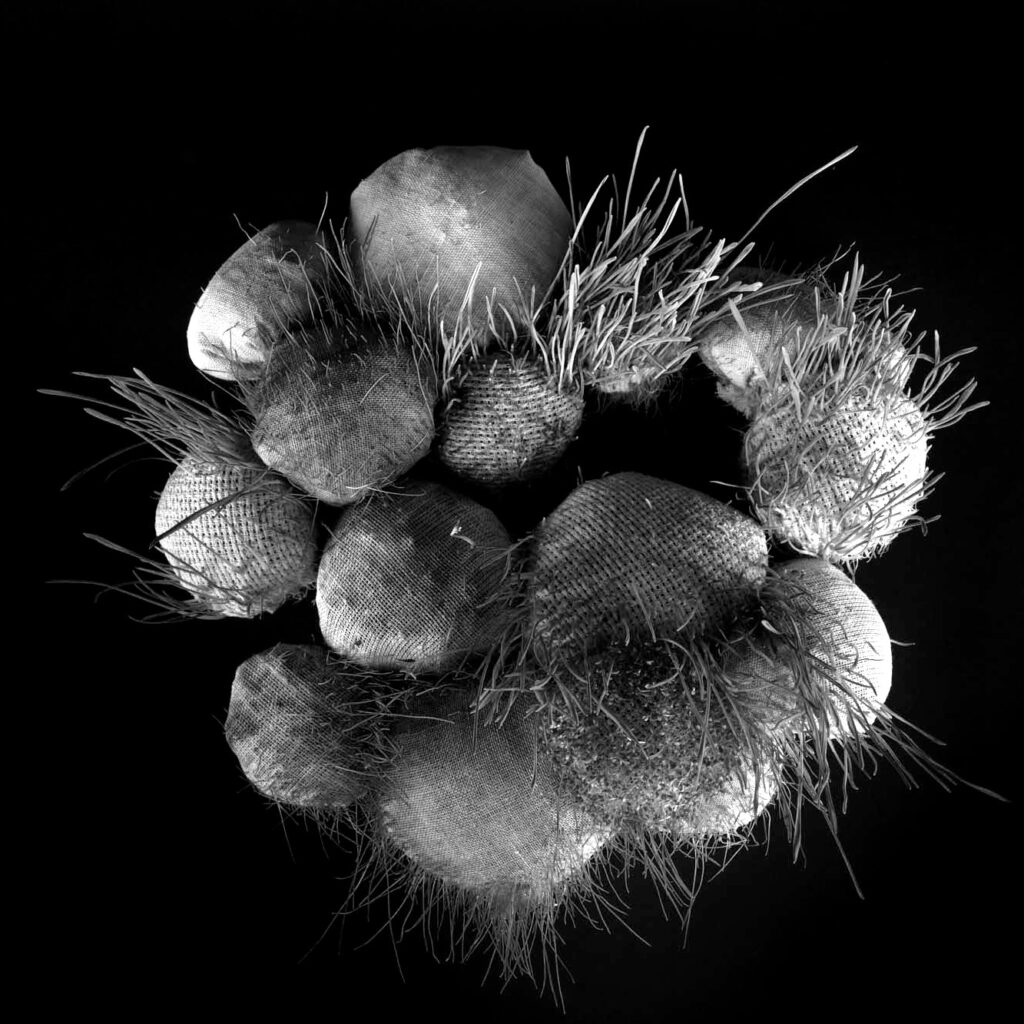
“Lust for life” / “Elujanu” 2023
Do we know how to care for and love what we do not directly feel or see? The future, for example, may seem completely invisible to us now. Can we care about something invisible?
This work gives us a chance to try. There is a lot of vitality in the invisible too. Containing the seeds of various plants, it will grow with care and love, but without care it will wither and die. In the same way, the future is in our hands. Do we care about it?
#rohelisemtulevik #keskkondmeieümber #väiksemjalajälg #puhaskohaliktoit #hoolimekoos #ajasmuutuvkunst #kasvavadtekstiilid
Circle diameter 90 cm, only natural materials (wool, cotton, linen), seeds.
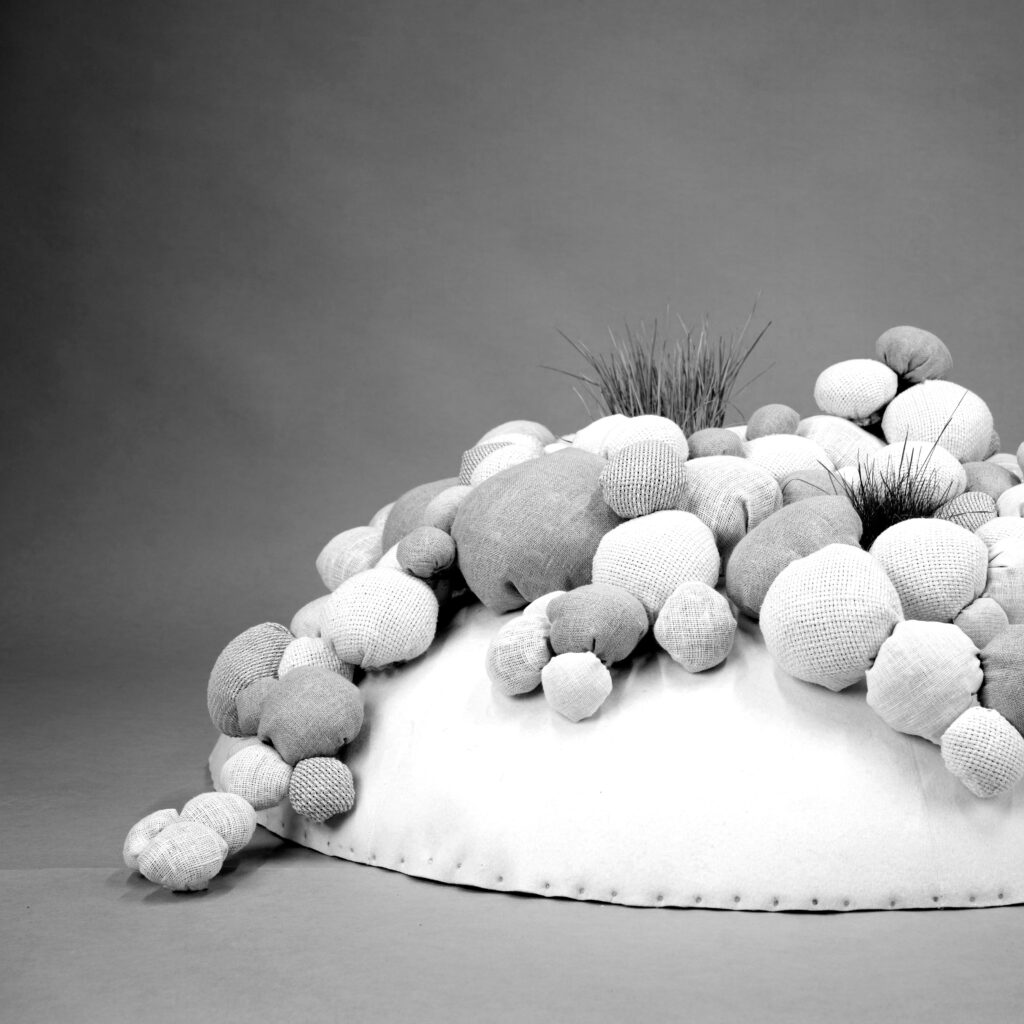
“Heaven come to the rescue” / “Tule taevas appi!” 2023
“Heaven come to the rescue” is about the misunderstandings and misunderstandings between people in different situations in life. To solve such problems, sometimes all you can do is ask for help from somewhere higher up.
43x33x12 cm, various residual materials
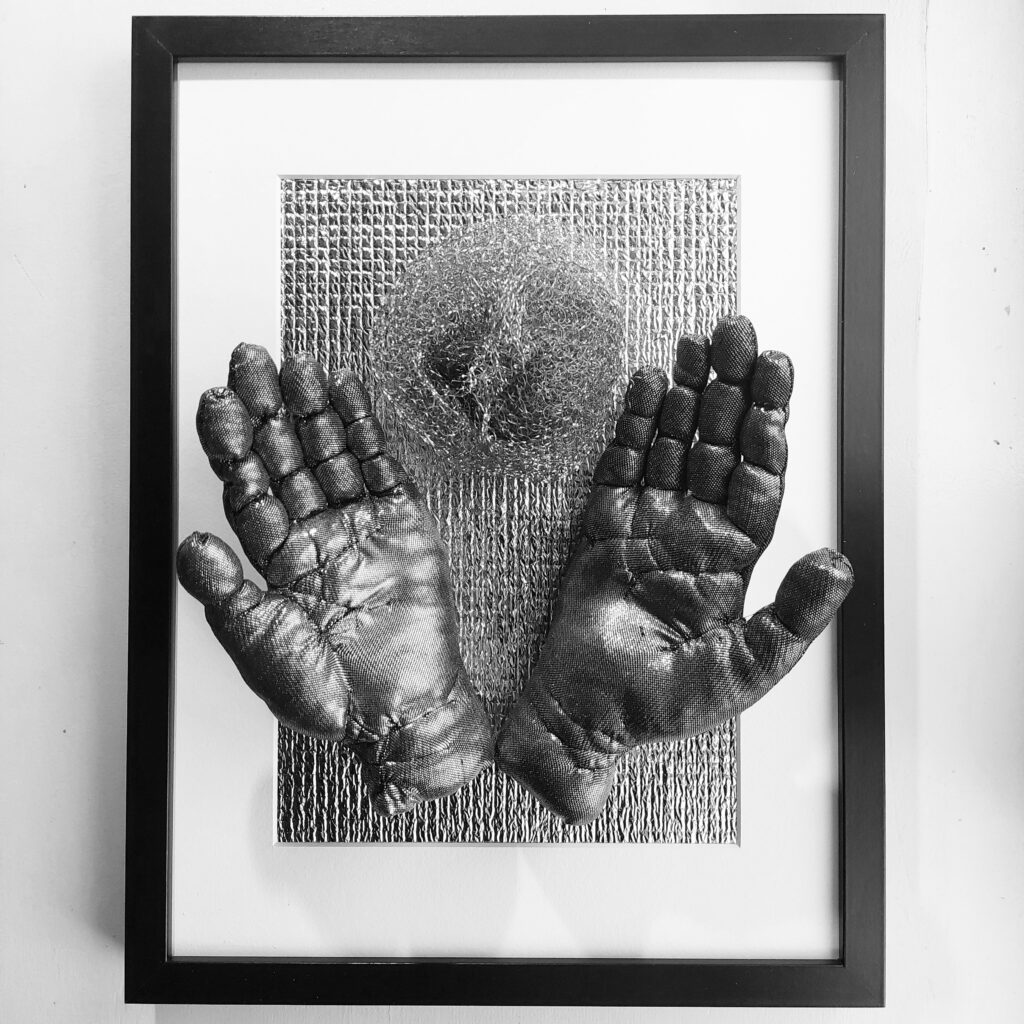
“Embroidery with roots” / “Juuretikand” 2023
The roots of plants mostly live their secret lives underground, but we could also try to extract such valuable material and redirect it into new areas. I wondered if roots could offer a natural alternative to 3D printing and embroidery machines? This was the starting point for the ‘root printing/root etching’ project, where nature embroidered itself and the human hand only guided. I gave nature a lush Jõelähtme handwriting pattern to embroider. How much can nature update it so that we still recognise it and embrace it? How much can our national heritage be renewed? It is a sensitive question – if not renewed at all, the pattern may simply disappear into oblivion, but if renewed too diligently, it will lose its connection with the original. So where is the line between anticipation and caution? Could past patterns still be kept alive by future techniques and materials?
100×100 cm, cotton, wheat seeds, author’s own technique.
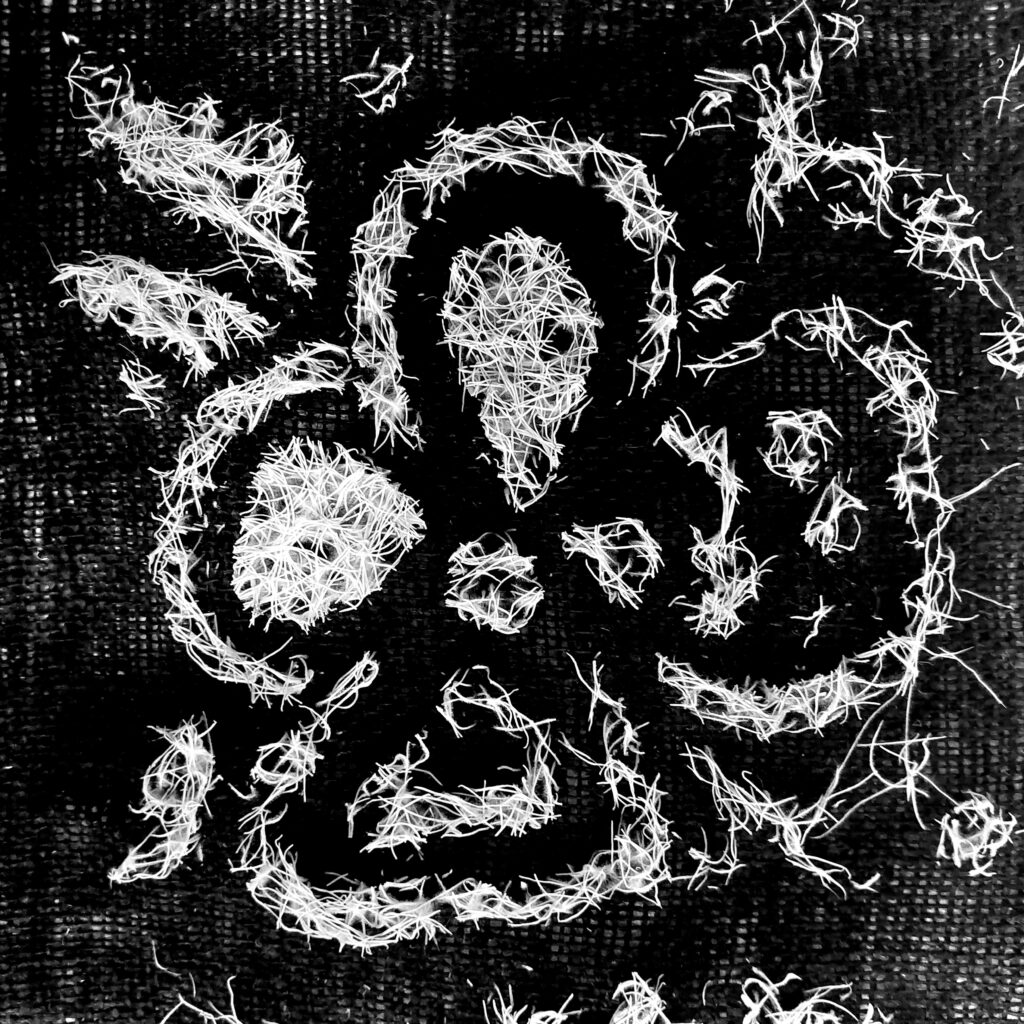
“A bumpy road home” / “Konarlik kodutee” 2023
He has not come here voluntarily.
He is not a tourist.
Also not a local.
But he is here.
He has no one.
But he is surrounded by all.
He has a box around him, but it’s not home.
Home is where the war is.
The road to home is very bumpy.
Help make his way home greener and brighter.
Because he wants to go home, but he doesn’t want war!
The work is made of sheep’s wool, clay and seeds. The work is woven on looms.

“The Stars of Kopli” / “Kopli tähed” 2021
Have you ever absent-mindedly stared into the sky on a quiet summer’s night and admired the twinkling stars? Or looked for familiar constellations and narrowed your eyes to find the North Star? All this is possible only in the darkness of the night. It is as if all the magic vanishes in daylight. The stars are always waiting for the night to reveal their magic.
This fabric shows the magic of a small corner of Tallinn. The stars of this part of town are its streets. The modest sweet life of these streets often opens at night when the stars light it. It is a magic world you can fall in love as easily as you can fall in love with the starry sky.
But one thing is sure – when you look into the sky the stars are always in the same place. The same rule applies to this fabric – the streets are exactly where the map dictates. The stars are always there, waiting for a chance to shine. I have used the Helvetica Bold font in the pattern, the same font is used for street signs in Estonia. Looking for the North Star I ended up in North Tallinn.
270x150cm, polyester, glow-in-the-dark printing ink (EKA, mentor Krista Leesi)
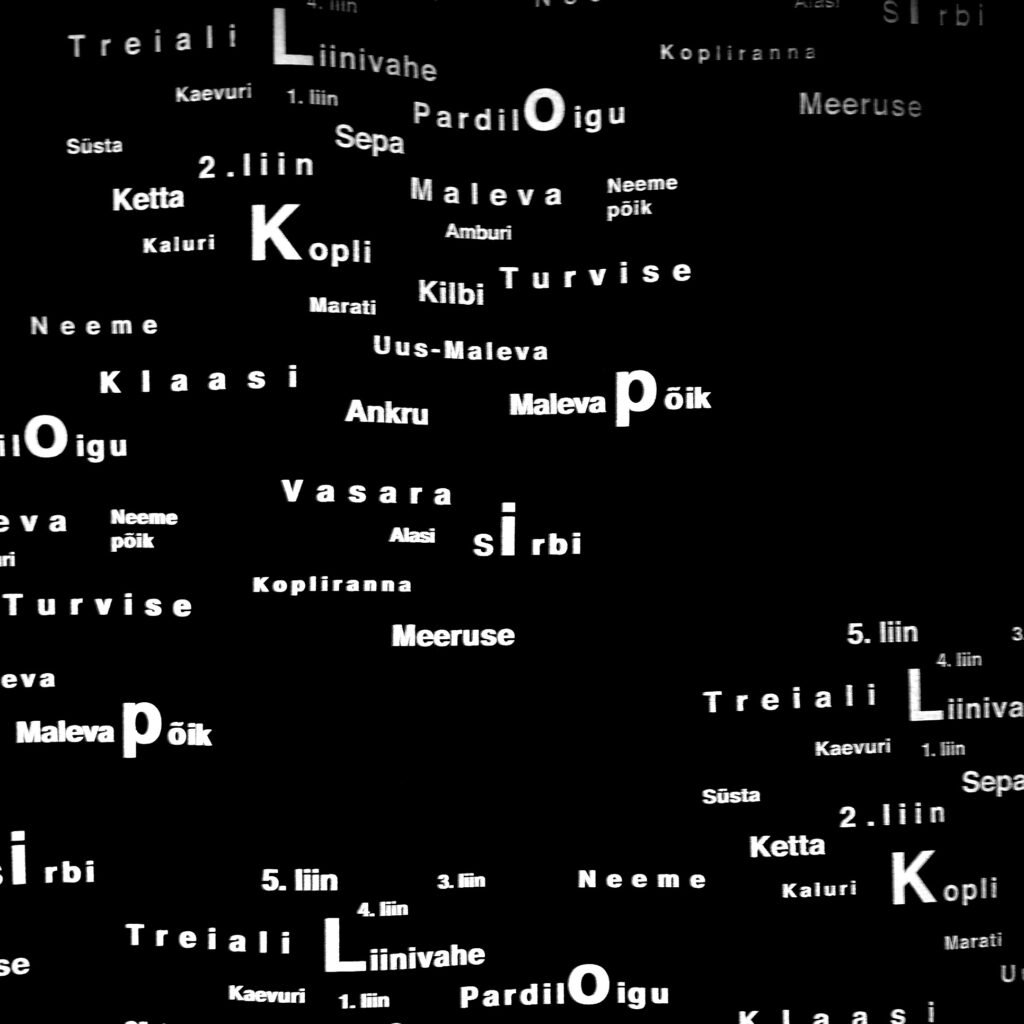
“Normal Bastard or How to domesticate Graffity?” / “Harilik kaak ehk kuidas kodustada grafitit?” 2021
A little bastard, who would like to scribble all his feelings on a wall is hiding in all of us. Textile artists have the opportunity to weave their feelings into fabric. This time, when creating the fabric, I used the feelings expressed by others, which I found in the percentart monument in front of EKA. This is the place, where people can let their little bastard free. This is the embodiment of the most current and freshly created folk art (read more: folk art, folk creation).
Folk art is a phenomenon that changes over time. The created fabric is knitted in 17.02.2021. The next moment it has already changed. It lives and develops. I combined such a modern phenomenon as graffiti with a homely and natural material such as wool yarn. The result is a woolen graffity.
70x100cm, wool (EKA, mentor Merilin Kruusel)
